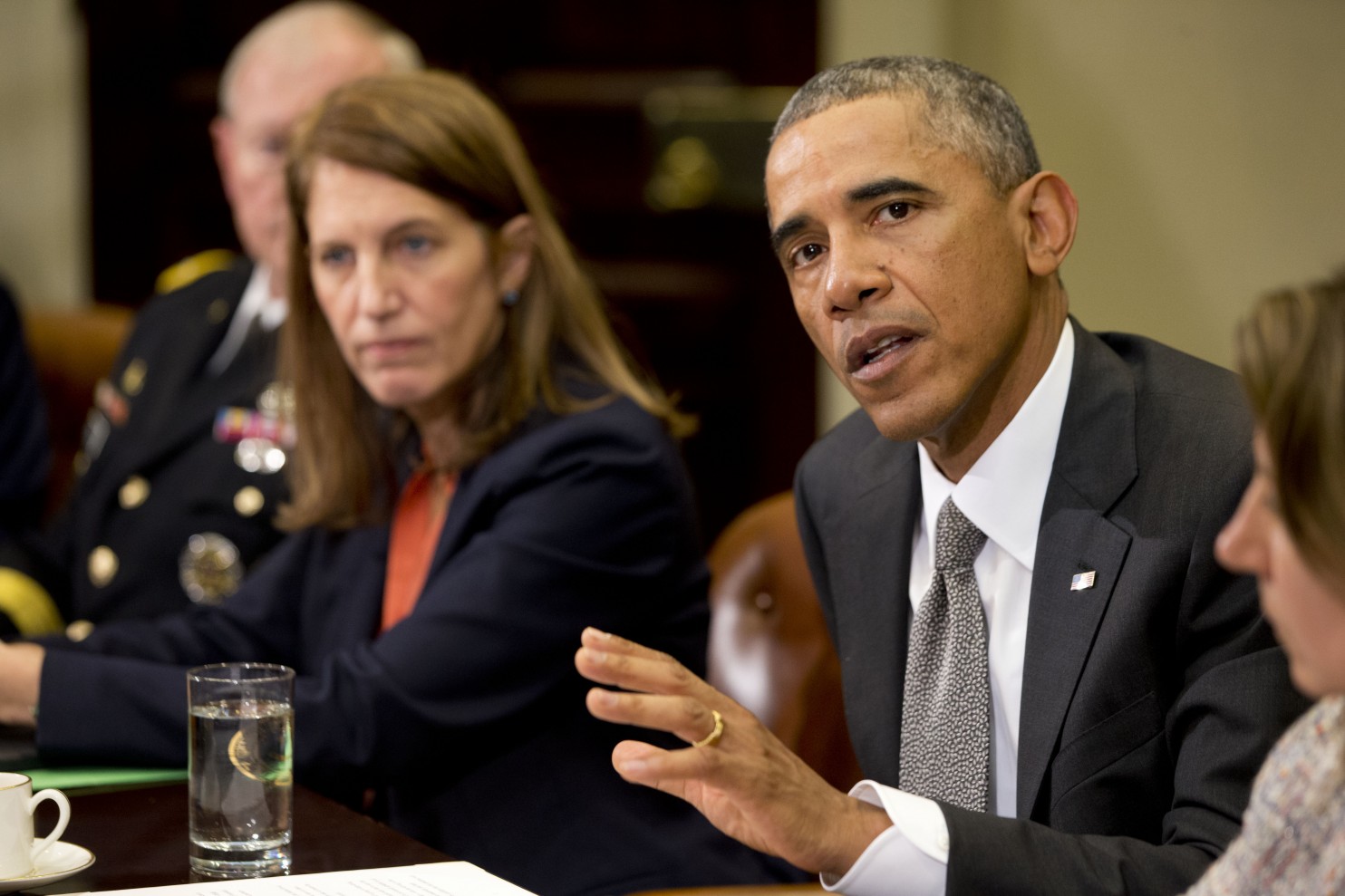The growing Ebola outbreak in West Africa has raised questions about how the U.S. government should respond to the epidemic.
President Obama on Monday found himself at odds with leading Republicans over how to deal with the issue after a Liberian man was hospitalized with the deadly virus last week in Dallas.
Obama said that he would increase passenger screenings in the United States and Africa to detect the disease, but he resisted calls from key GOP lawmakers to impose a strict ban on air travel from countries most affected by the outbreak.

President Obama meets with members of his national security team and senior staff on Oct. 6 to receive an update on the Ebola outbreak in West Africa. (AP/Jacquelyn Martin)
Even if a travel ban never happens, the Centers for Disease Control still operates 20 quarantine stations at key ports of entry and land crossings. The facilities deal with travelers who enter the country with communicable diseases — or at least showing signs of such illness.
For what it’s worth, the term “quarantine” comes from the Latin word for forty, and it stems from the first formal system of quarantine, which required ships in Venice, Italy, to anchor for 40 days before landing, according to a history of the practice from the CDC.
Let’s take a look at how the U.S. government has used quarantines to limit outbreaks.
1738: New York City commandeers Bedloe’s Island, now home to the Statue of Liberty, as a quarantine station sometime after 1732, due to concerns about smallpox and yellow fever, according to the National Park Service. A history of quarantines from PBS’s “Nova” places the date at 1738.
1799: A quarantine station and hospital are built at the port of Philadelphia in response to a yellow fever outbreak that started in 1793, according to a CDC timeline. The epidemic kills 5,000 of the city’s 45,000 residents and prompts another 17,000 to flee, according to an article from Harvard University libraries. Philadelphia served as the nation’s capital at the time.
1863: New York state’s Quarantine Act calls for a quarantine office run by a health officer who can detain any ship entering the port of New York, order all cargo to be removed and require the ships to be cleaned and fumigated, according to Nova.
1878: Congress passes the National Quarantine Act, shifting quarantine powers from state to federal government. The legislation does not conflict with states’ policies, but it paves the way for federal involvement in quarantine activities, according to the CDC.
1917-1919: Federal authorities during World War I incarcerated tens of thousands of prostitutes in an effort to curb the spread of venereal disease in what historian Allan Brandt has called “the most concerted attack on civil liberties in the name of public health in American history,” according to Nova.
1921: The quarantine system becomes fully nationalized when administration of the last non-federal quarantine station is transferred to the U.S. government, according to the CDC.
1944: The Public Health Service Act gives the federal government a more robust quarantine authority, giving the Public Health Service responsibility for “preventing the introduction, transmission, and spread of communicable diseases from foreign countries into the United States,” according to the CDC.
1967: The CDC, then known as the Communicable Disease Center, takes over federal quarantine stations and functions, which had fallen under the purview of the Federal Security Agency since 1939.
1970-2000: The CDC reduces the number of quarantine stations from 55 to eight in the 1970s because the threat of infectious diseases is thought to be a thing of the past, according to the CDC. By 1995, all U.S. ports of entry are covered by seven quarantine stations, but another one was added in 1996 in Atlanta, Georgia, just before the 1996 Summer Olympics.
2004–2007: The CDC increases the number of quarantine stations to 20 due to concerns about post-9/11 bioterrorism and the 2003 epidemic of severe acute respiratory syndrome, also known as SARS.

